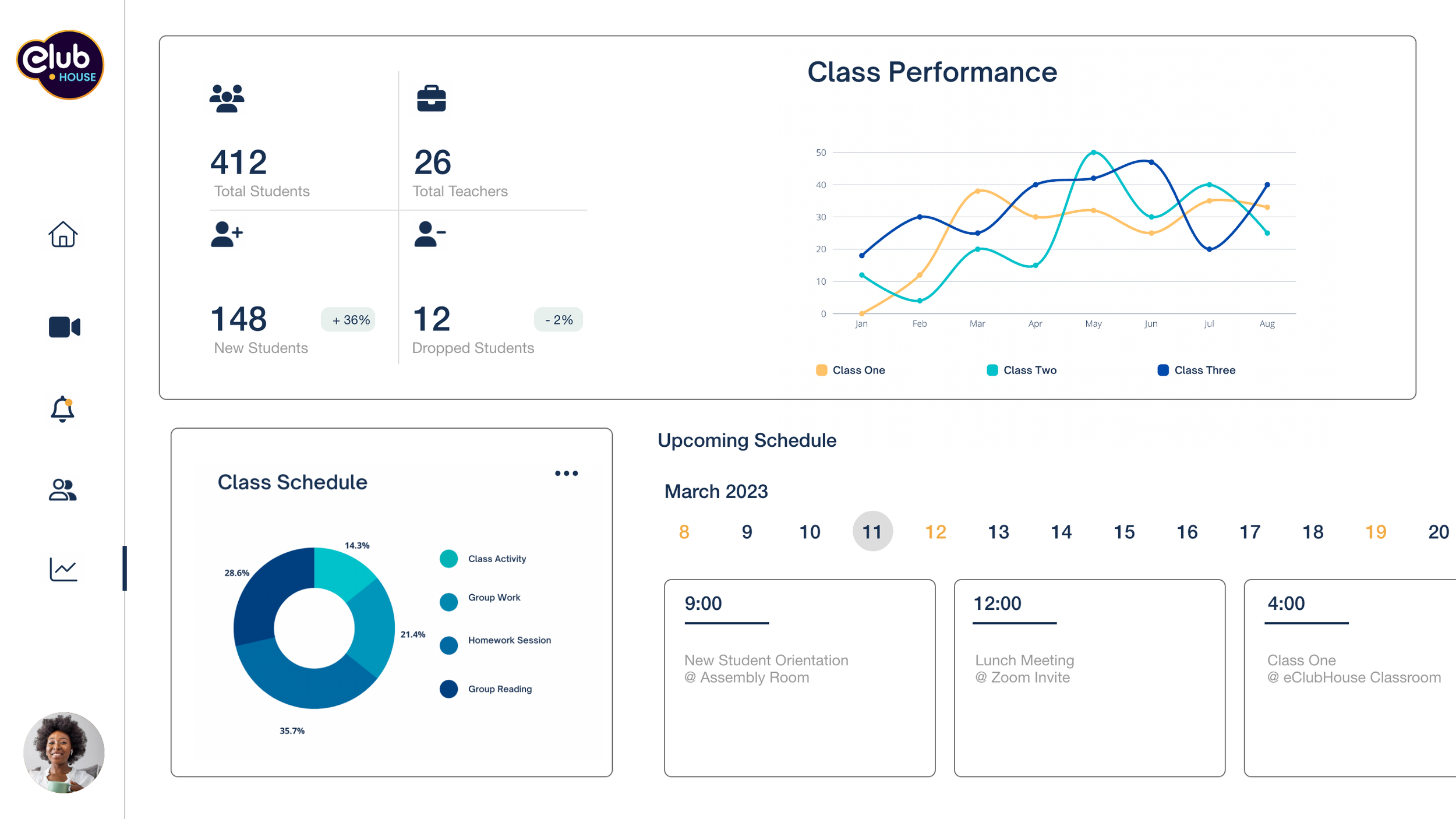Crafting the Future of Online Learning: Enhancing Teacher and Student Connections
Acting as a competitor to Zoom, Engageli is an EdTech start-up company that launched its video conferencing platform for higher education users due to the growing need for remote classrooms during the 2020 global pandemic. Tasked by Engageli to redesign their existing platform to suit the needs of their new after school program service called eClubHouse, my team and I created a dual-interface software experience.
The Challenge
Engageli aimed to transform the virtual classroom experience but faced challenges with complex interfaces that made it difficult for instructors to manage live sessions effectively. Instructors struggled with navigating tools for breakout rooms, monitoring student engagement, and facilitating real-time interaction, all while maintaining a smooth class flow. The challenge was to redesign key aspects of the platform to simplify these tasks, reduce cognitive load, and improve overall usability for both instructors and students.
My Role
I led the UX design for Engageli’s platform enhancements focused on improving the virtual classroom experience. I collaborated with product managers, engineers, and educators to identify usability issues and prioritize feature improvements. My process involved conducting user research sessions, synthesizing feedback, iterating wireframes, and delivering high-fidelity prototypes that aligned with user needs and technical constraints.
Insights
User interviews with instructors and students uncovered pain points around engagement, navigation, and real-time interaction features. For example, many instructors struggled to manage breakout rooms efficiently, which disrupted class flow. I mapped these insights into user journey maps and personas to guide design decisions focused on ease of use and reducing cognitive load during live sessions.
“I need to quickly see who’s engaged and who needs help without interrupting the flow.”
This insight directly shaped the dashboard redesign and interaction patterns.
Outcome
The redesign improved instructor control and student participation by streamlining the interface and introducing contextual tools for breakout room management and live polling. Early usability tests showed a 30% reduction in time instructors spent managing classroom logistics and a notable increase in student engagement metrics. These results helped validate the design direction and informed the product roadmap.
Research
We started our research with a very broad scope by performing domain research. This was primarily centered around the benefits and outcomes of afterschool programs and the impact of COVID-19 on afterschool programs. From our initial research, we could clearly define our Business Goals, User Goals, and Project Goals.
Business Goal
Engageli needs an interface for eClubHouse programming, tailored specifically to the service’s coaches and students.
Student Goal (user one)
Children need a wholesome and safe way to socialize due to the global pandemic.
Coach Goal (user two)
Coaches need built-in features specific to eClubHouse programming to efficiently facilitate the class and onboard substitutes.
Next, we performed competitive analyses of direct and indirect competitors. We analyzed platforms such as Zoom and Google Meet, and educational programs such as Upbrainery and Outschool. We also deemed several games such as Minecraft and Roblox as indirect competitors as they would be competing for students’ attention. A UI audit was performed to compare and define visual styles that were appealing to our demographic. We began with Zoom to compare their video platform interface and then moved to more age-directed visual platforms like Minecraft and Roblox.
We conducted user interviews with parents and children ages 6-12. Questions asked were centered around experience with afterschool programs, social interactions, and personal preferences. We gathered our findings and then made our personas.
Key Findings
“Having a way to view all students at once would help me be more in control” -Coach at engageli
“I like hanging out with my friends online because I miss seeing them at school.” -Ria, 10 years old
“Social interaction is crucial for children's development. I want my kids to have the opportunity to interact with their friends virtually.” — Jennifer, mom
Prototypes & Usability Tests
With our first iteration, we began concept sketching and then designed our mid-fidelity prototype. With this prototype, we created a dashboard that:
navigated the users with a progress bar at the top of the screen
showcased a toolbox to house key features like raising your hand and screen-sharing options
shared the coach’s screen while keeping a view of the entire class at one time
chat feature
We tested this prototype with users, gathered their feedback, and reevaluated our use of icons and the complexity of the dashboard to better suit our demographic. We then refined our design and created our hi-fidelity, clickable prototype.
Hi-fidelity prototype
With our second iteration, we created a dashboard that:
Didn’t include the toolbox feature for ease of use
Included a stationary coach view to keep children engaged
Included a coach’s dashboard to display high-level analytics and schedules
Deliverables
The redesign improved instructor control and student participation. Early usability tests showed a 30% reduction in time instructors spent managing classroom logistics and a notable increase in student engagement metrics. These results helped validate the design direction and informed the product roadmap. This project deepened my understanding of designing for real-time, dynamic environments and balancing simplicity with complex features.



